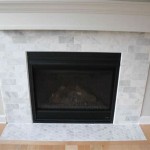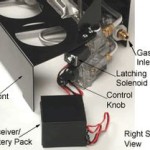The Enduring Appeal of Mexican Outdoor Fireplaces
Mexican outdoor fireplaces, often referred to as chimeneas, represent a unique intersection of functionality and aesthetic appeal. These structures, traditionally crafted from clay, but now also found in cast iron and other materials, offer a distinctive heating solution for outdoor spaces, while simultaneously serving as captivating decorative elements. Their origin traces back centuries, with evidence suggesting their use by indigenous communities in Mexico for cooking, heating, and ceremonial purposes. The design has been refined over time, leading to the various styles and sizes available today.
The enduring popularity of Mexican outdoor fireplaces stems from a multitude of factors, including their efficient heat radiation, portability (in many cases), and the inherent rustic charm they bring to patios, gardens, and other outdoor environments. Unlike open-pit fires, chimeneas provide a contained burning space, minimizing the risk of spreading embers and offering a degree of protection from wind. The heat is channeled upwards through the chimney, effectively radiating outwards and creating a warm and inviting ambiance.
The selection of a Mexican outdoor fireplace requires careful consideration of several factors, including the intended use, size of the outdoor space, and desired aesthetic. Material choice plays a crucial role in the fireplace's heat retention, durability, and overall appearance. Proper maintenance is essential to prolonging the lifespan of the fireplace and ensuring its safe operation.
Key Considerations when Choosing a Mexican Outdoor Fireplace
Several critical aspects warrant attention during the selection process. These include the material of construction, size and placement, as well as safety features. Understanding these elements ensures a suitable choice that meets specific needs and preferences.
Material: Clay is the traditional material for chimeneas, known for its excellent heat retention properties. Clay chimeneas typically require a curing process before their first use, which involves gradually increasing the intensity of the fire to prevent cracking. Cast iron chimeneas offer increased durability and require less maintenance than clay models. However, they tend to heat up more quickly and cool down more rapidly. Other materials, such as steel and copper, may also be used, each possessing its own set of characteristics regarding heat retention, durability, and aesthetics. The choice of material should be guided by the climate, frequency of use, and desired aesthetic.
Size and Placement: The size of the outdoor space should dictate the size of the chimenea. A large chimenea in a small patio could overwhelm the area, while a small chimenea in a large garden might not provide adequate warmth. The location of the chimenea is equally important. It should be placed on a level, non-flammable surface, away from overhanging trees, fences, and other combustible materials. Adequate clearance is crucial to prevent the risk of fire. Consideration should also be given to prevailing wind directions to minimize smoke exposure to surrounding areas.
Safety Features: A well-designed chimenea will incorporate safety features such as a spark screen or mesh cover to prevent embers from escaping. Some models include a door or grate to contain the fire and prevent logs from rolling out. It is also advisable to use a fire-resistant mat underneath the chimenea to protect the surface below. Regardless of the safety features incorporated, it is imperative to always supervise the fire and keep a fire extinguisher or water hose readily available.
The Art of Using and Maintaining a Mexican Outdoor Fireplace
Proper usage and maintenance are critical to ensure the safety and longevity of a Mexican outdoor fireplace. These practices extend beyond simple cleaning and involve understanding the nuances of fire management and material preservation.
Fire Management: Starting a fire in a chimenea requires a different approach than starting a fire in a traditional fireplace. The narrow chimney can restrict airflow, so it is important to build a small, well-ventilated fire using dry kindling and small pieces of wood. Overloading the chimenea with too much wood can result in excessive smoke and potentially damage the structure. Gradually adding larger pieces of wood once the fire is established is recommended. The type of wood used also matters; hardwoods like oak and maple burn hotter and longer than softwoods like pine, producing less smoke. Never use accelerants like gasoline or kerosene to start a fire.
Cleaning and Storage: Regular cleaning is essential to prevent the build-up of soot and creosote, which can increase the risk of chimney fires. After each use, allow the chimenea to cool completely before removing the ashes. A metal shovel or brush can be used to clean the interior. For clay chimeneas, avoid using water or harsh chemicals, as these can damage the material. During periods of non-use, particularly during the winter months, it is advisable to store the chimenea in a sheltered location or cover it with a waterproof tarp to protect it from the elements. This will prevent moisture from seeping into the clay or causing rust on metal models.
Repairing Damage: Over time, clay chimeneas may develop cracks due to heat stress. Small cracks can often be repaired using a high-temperature sealant or refractory cement. Larger cracks may require more extensive repairs or replacement of the affected section. Cast iron chimeneas are less prone to cracking but may rust if exposed to moisture. Rust can be removed with a wire brush and the affected area can be treated with a rust-inhibiting paint. Regular inspection of the chimenea for signs of damage is recommended, allowing for timely repairs and preventing more significant problems from developing.
The Aesthetic Appeal of Mexican Outdoor Fireplaces
Beyond their functionality, Mexican outdoor fireplaces offer a unique aesthetic appeal that can enhance the ambiance of any outdoor space. Their distinct shapes, textures, and often vibrant colors contribute to a warm and inviting atmosphere.
Architectural Styles: Chimeneas are available in a wide range of architectural styles, from traditional designs that echo the forms of pre-Columbian pottery to more modern and contemporary interpretations. Some models feature intricate carvings, hand-painted designs, or decorative elements such as mosaic tiles. The choice of style should complement the existing architectural style of the home and garden. A rustic clay chimenea might be well-suited to a Mediterranean-style patio, while a sleek steel chimenea could be a better fit for a modern minimalist garden.
Color and Texture: The color and texture of a chimenea can significantly impact its overall appearance. Clay chimeneas often come in earthy tones, ranging from terracotta to reddish-brown. These natural colors blend seamlessly with outdoor environments. Painted chimeneas offer a wider range of color options, allowing for greater customization. The texture of the chimenea can also add visual interest. Some models have a smooth, polished finish, while others have a rough, textured surface. The choice of color and texture should be guided by personal preferences and the desired aesthetic.
Creating Ambiance: Beyond the physical appearance of the chimenea, the ambiance it creates through the warmth and light of the fire is equally important. The flickering flames cast a soft, inviting glow that can transform an ordinary outdoor space into a cozy and inviting retreat. The crackling sound of the fire adds to the sensory experience, creating a soothing and relaxing atmosphere. Whether used for entertaining guests or simply relaxing alone, a Mexican outdoor fireplace can create a sense of warmth and connection that enhances the enjoyment of the outdoors.

What Is A Mexican Chimenea The Pottery Patch

15 Of The Most Fabulous Outdoor Fireplace Ideas Designs Mexican Style Homes Hacienda

23 Cozy Outdoor Fireplace Ideas For The Most Inviting Backyard Spanish Style Homes Living Space

Southwestern Outdoor Fireplaces Landscaping Network

Foap Com Southwestern Adobe Outdoor Fireplace Stock Photo By Arizonagirl Spanish Style Homes Mexican Decor

39 Outdoor Stucco Fireplace Ideas You Have To See Believe

Outdoors Fireplace Decorated Using Mexican Tile Home Decor Gallery Mission Accesories Copper Sinks Mi Spanish

Outdoor Fireplace Design Ideas

Outdoor Fireplace Design Ideas Getting Cozy With 10 Designs Unilock

39 Outdoor Stucco Fireplace Ideas You Have To See Believe
Related Posts








